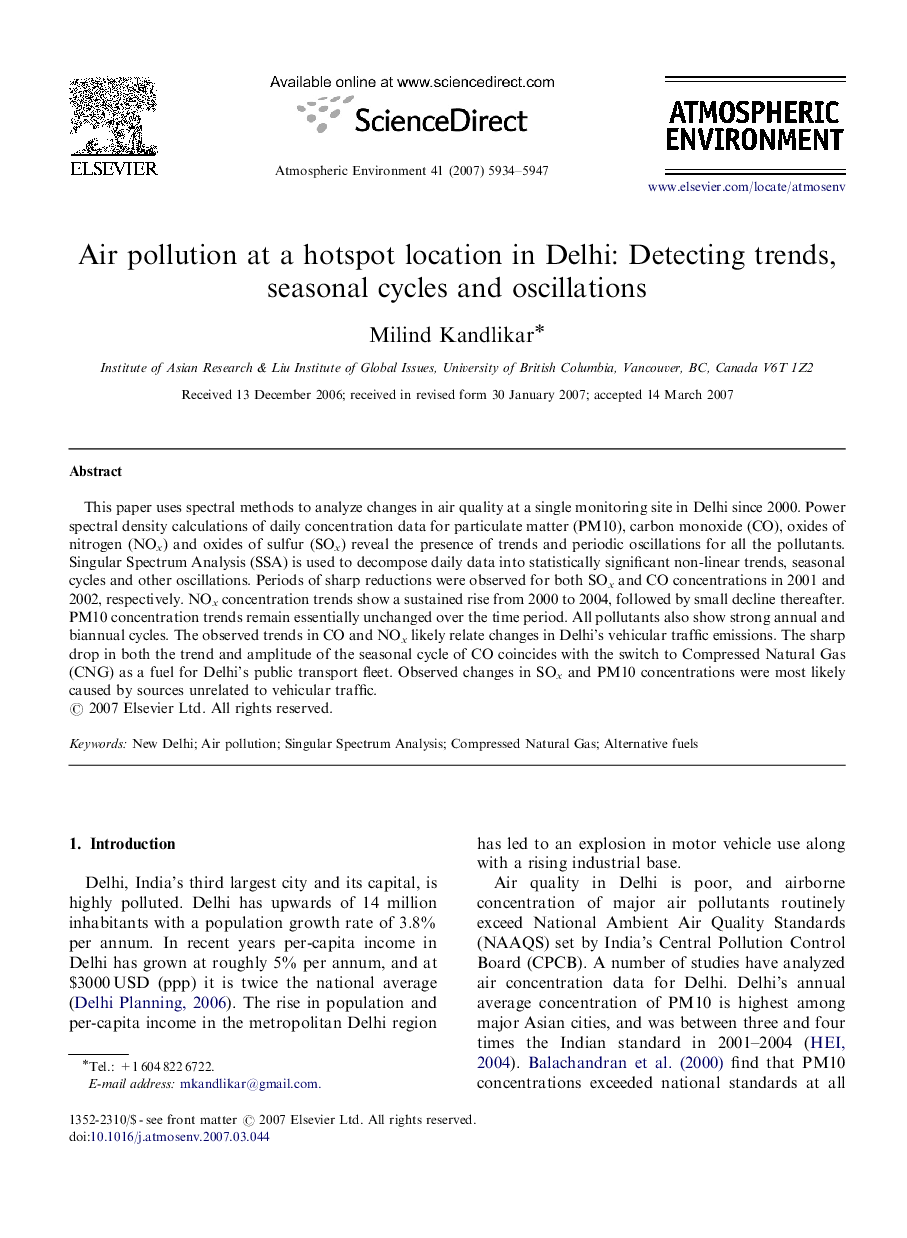| Article ID | Journal | Published Year | Pages | File Type |
|---|---|---|---|---|
| 4442574 | Atmospheric Environment | 2007 | 14 Pages |
This paper uses spectral methods to analyze changes in air quality at a single monitoring site in Delhi since 2000. Power spectral density calculations of daily concentration data for particulate matter (PM10), carbon monoxide (CO), oxides of nitrogen (NOx) and oxides of sulfur (SOx) reveal the presence of trends and periodic oscillations for all the pollutants. Singular Spectrum Analysis (SSA) is used to decompose daily data into statistically significant non-linear trends, seasonal cycles and other oscillations. Periods of sharp reductions were observed for both SOx and CO concentrations in 2001 and 2002, respectively. NOx concentration trends show a sustained rise from 2000 to 2004, followed by small decline thereafter. PM10 concentration trends remain essentially unchanged over the time period. All pollutants also show strong annual and biannual cycles. The observed trends in CO and NOx likely relate changes in Delhi's vehicular traffic emissions. The sharp drop in both the trend and amplitude of the seasonal cycle of CO coincides with the switch to Compressed Natural Gas (CNG) as a fuel for Delhi's public transport fleet. Observed changes in SOx and PM10 concentrations were most likely caused by sources unrelated to vehicular traffic.
